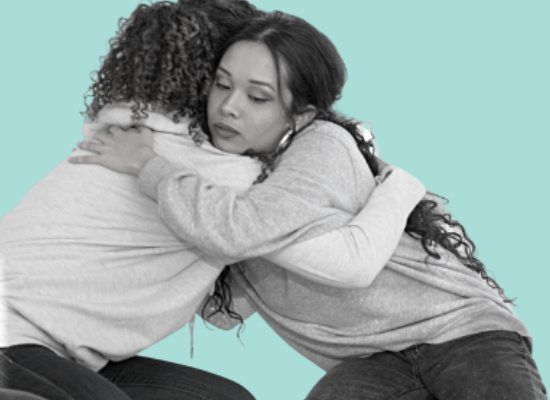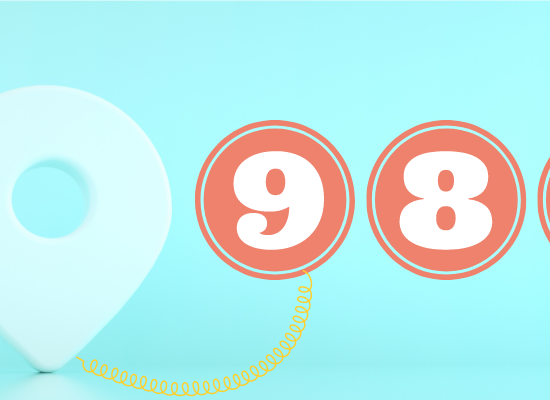
Stephanie Hepburn is a writer in New Orleans. She is the editor in chief of #CrisisTalk. You can reach her at .
Rebecca Boss says a crisis response may be the first and only chance to help a person experiencing a substance use disorder. “Not only to affect the outcome of the immediate crisis but also a person’s overall recovery process,” she says. Boss is a senior consultant at the Technical Assistance Collaborative and the former head of Rhode Island’s Department of Behavioral Healthcare, Developmental Disabilities, and Hospitals.
Emergency response for substance use disorders, notes Boss, has long been segregated from mental health, the overall treatment system, and its development. She and her co-authors dive into the siloing, stigma, and prejudice people with substance use disorders face in a paper for the National Association of State Mental Health Program Directors, a companion resource to SAMHSA’s National Guidelines for Behavioral Health Crisis Care. The authors also share what changes to make to address substance use disorders equitably.
A person’s first impression of the systems they interact with while in crisis can set the tone for how they interact with those systems in the future. The care they receive, notes Boss, shapes whether they feel hopeful or discouraged if the experience is negative or punitive. “There’s a real opportunity at that moment for a person to see hope when providers are welcoming, engaging, recovery-oriented, non-judgmental, and meet people where they are,” she says. Providers’ approach can be life-saving, or it can push people away from seeking care when they need it most.
Despite the efficacy of trauma-informed, person-centered care, stigma and prejudice have long sunk their teeth into American society when it comes to substance use disorders. While there certainly has been progress made in this arena, Boss notes that some people continue to see these disorders as a choice and moral failing. While people experiencing mental health challenges also face stigma and prejudice, the biases toward those with substance use disorders turn on the perception of conscious choice.
“For the most part, people get that someone doesn’t choose to have schizophrenia or bipolar disorder,” she says, “but some still believe that because a person initially decided to use a substance, that an alcohol or opioid use disorder doesn’t equate to an organic brain disease.”
The general public is less willing to accept the concept of brain disease in substance use. Unfortunately, that societal misperception seeps into healthcare—even in discussions on the life-saving medication Naloxone. “I once heard an emergency room nurse say Naloxone enables people to continue to use and then ask, ‘How many times are you going to use Naloxone?’” says Boss.
“This is a medical professional who’s asking, ‘Which time do we let a person die?’” “It’s that kind of attitude that’s sometimes present in the medical community.”
Boss’ comments are reminiscent of those made by Veronica*, a peer recovery coach who #CrisisTalk interviewed in 2019. Veronica credits ongoing medication-assisted treatment and caring recovery coaches for her recovery. She said that without MAT, she’d likely be dead. “I would have continued using, or relapsed, unsure of what I was taking and the dosage,” Veronica said. “Heroin is no longer pure. It’s increasingly packed with other ingredients, many of them potentially lethal, like Fentanyl.”
Despite Veronica’s desire to share her story with colleagues—she felt it would help them to have a tangible example of MAT and recovery—Veronica feared they wouldn’t accept her. She had good reason to think so. “There’s a lot of stigma within the recovery world and a belief that MAT is simply substituting one drug for another.” At a team meeting, a colleague made a remark similar to the medical professional Boss mentioned. The person told Veronica that Naloxone enables people addicted to opioids, saying, “We’ll bring them back, and they will just use again.”
These statements, noted Veronica, reek of pervasive stigma not just in healthcare but among behavioral healthcare professionals. “It took me multiple times to get there,” she said. “What if people at the clinic had just given up on me? Where would I be?”
With 988 around the corner—the three-digit number for mental health, substance use, and suicidal crises telecom companies must make live by July 16, 2022—Boss says there’s an opportunity for parity. “Substance use disorders,” she says, “can’t be an afterthought in our approach to crisis care.” Furthermore, nearly 38% of people living with a substance use disorder have a mental illness. Those dependent on alcohol or drugs are at a 10-14 times greater risk of suicide, with roughly 22% of suicides involving alcohol intoxication. Yet, most people don’t have access to both mental health and substance use treatment. Even fewer receive the recommended simultaneous care.
During the Covid pandemic, Rhode Island experienced a 25 percent increase in overdoses among its residents in 2020 compared to 2019. Nationwide, the predicted number of drug overdose deaths increased to more than 93,000, a 29% jump from 2019. Americans are experiencing trauma related to the Covid disaster and racial disparities. “How will this trauma impact people for generations?” asks Boss.
Nationwide, the default mental health and substance use crisis providers have been the emergency room, inpatient hospitalization, and the criminal justice system, resulting in psychiatric boarding, high recidivism rates, and tragedy. To address these issues—even before 988—many states began moving toward community-based crisis services. “There’s a resurgence of these kinds of services for mental health,” says Boss, “and a clear desire to bring back mobile crisis teams to connect people to care in the community and divert them from the emergency room or a jail cell.”
However, the drive for increased community crisis services has primarily focused on mental health. “Across the nation, I haven’t seen as much of a push to respond to substance use crises similarly,” says Boss. In fact, behavioral health service providers across the crisis care continuum will often reject a person if they’re intoxicated. That includes mobile crisis and crisis receiving and stabilization programs. “Many of the 24/7 behavioral health triage and emergency room diversion centers focus primarily on mental health crises,” she says. “What they need is a ‘no wrong door’ policy.” It’s an approach where facilities accept everyone who comes.
In June 2019, retired Phoenix police officer Nick Margiotta told #CrisisTalk that crisis services must have a no-refusal, “no wrong door” drop-off policy for patients in need. After receiving CIT training in 2001, he was excited to do his first dropoff. The caller in crisis was depressed; she’d been drinking and threatened to take 100 Advils. Margiotta took her to a crisis stabilization facility where staff told him they couldn’t accept her because she’d been drinking. Then, when he took her to the detox facility, they wouldn’t take her because she was suicidal. Arizona, thanks in large part to Margiotta, has made massive strides in this area, but most of the nation is still behind.
A couple of months ago, Erin K. Vickery, EMS director of operations at the Fulton Division of Grady Health System in Atlanta, Georgia, told #CrisisTalk that nearby crisis stabilization facilities continue to lack a “no wrong door” approach. Consequently, if the person in crisis needs a higher level of care or is intoxicated, the mobile crisis team has little option but to take the person to the emergency department. Vickery said the “no wrong door” approach shouldn’t just apply to police but also to EMS and mobile crisis services. “Our primary alternative destination is still to the emergency department because crisis facilities aren’t accepting drop-offs,” she says.
Boss takes the “no wrong door” approach further, saying the policy should include first responder and mobile crisis drop-offs, referrals, and walk-ins. To do so, crisis providers must fully integrate substance use treatment and substance use expertise, including the ability to induct medication for opioid use and other substance use disorders. “Our crisis providers need to be able to handle both mental illness and substance use disorders,” she says. That’s why Boss helped develop BH Link in Rhode Island, a “no wrong door” 24-hour behavioral health triage center. In addition to drop-offs, referrals, and walk-ins, staff also go into the community to address people’s needs on-site, or, if needed, they can transport the person back to the triage center.
While facilities need to have a “no wrong door” policy and integrate services for mental health and substance use disorders, they also must coordinate with other partners and parts of the crisis system, including the emergency department. Boss says there isn’t the same connection to care for people experiencing substance use disorders in crisis as there are for people experiencing psychiatric distress. During her tenure as the State Opioid Treatment Authority for Rhode Island, Boss asked an emergency room physician what they did when a person came in who had overdosed. “The doctor told me, ‘We watch them for four hours, and then we let them go,’” she says. There was no ability to truly engage the patient, understand the person’s needs, and provide a warm handoff to community-based services. That exchange was the impetus for Boss to create the innovative Anchor ED. In this peer-run program, a peer recovery specialist goes to the person who presents at the emergency department with a substance use disorder.
“Here’s a window of opportunity where the person is present, and if we don’t take advantage of the moment, we may miss it,” she says. “The person might never show up again.”
With the ongoing Covid pandemic, a long-needed lens on equity, diversity, and cultural competency, and 988 on the horizon, Boss says now is the time for crisis systems to become holistic and comprehensive in how they approach mental health and substance use crises. “Care can’t be diagnosis dependent,” she says, “otherwise the existing siloing and lack of parity between substance use and mental health treatment delivery systems will continue.”
Read the full “Addressing Substance Use in Behavioral Health Crisis Care: A Companion Resource to the SAMHSA Crisis Toolkit” report.
*Veronica is not the peer recovery coach’s real name. She asked to remain anonymous.









